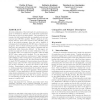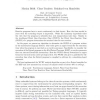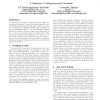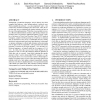47 search results - page 1 / 10 » Tight WCRT analysis of synchronous C programs |
CASES
2009
ACM
13 years 11 months ago
2009
ACM
Accurate estimation of the tick length of a synchronous program is essential for efficient and predictable implementations that are devoid of timing faults. The techniques to dete...
ENTCS
2008
13 years 4 months ago
2008
Reactive programs have to react continuously to their inputs. Here the time needed to react with the according output is important. While the synchrony hypothesis takes the view t...
CODES
2002
IEEE
13 years 9 months ago
2002
IEEE
In this paper we present a method to perform static timing analysis of SystemC models, that describe parallel, communicating software processes.The paper combines a worstcase exec...
DAC
2009
ACM
14 years 5 months ago
2009
ACM
Traditionally, synchronous languages, such as Esterel, have been compiled into hardware, where timing analysis is relatively easy. When compiled into software ? e.g., into sequent...
CASES
2005
ACM
13 years 6 months ago
2005
ACM
The concurrent synchronous language Esterel allows proto treat reactive systems in an abstract, concise manner. An Esterel program is typically first translated into other, non-s...




